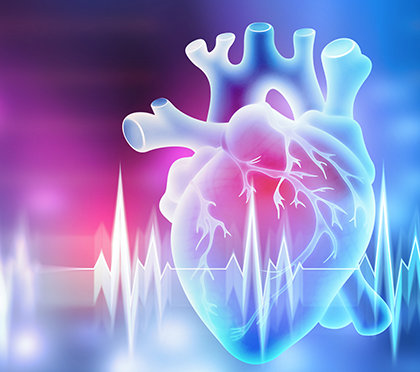Core facts behind Cardiology and heart disease prevention
Core facts behind Cardiology and heart disease prevention
Blog Article
Comprehending the Value of Cardiology in Modern Medical Care Providers
Cardiology plays an essential duty in modern-day medical care, specifically as cardiovascular disease continues to be the leading root cause of death worldwide. Breakthroughs in diagnostics and therapy have actually changed individual treatment, making it possible for earlier interventions and improved results. Moreover, the change in the direction of preventive cardiology empowers individuals to manage their health and wellness proactively. As innovation remains to evolve, the assimilation of cutting-edge options may further redefine cardiology's influence on public wellness, triggering a closer examination of arising patterns and their implications.
The Occurrence of Cardiovascular Disease and Its Influence On Public Wellness
Heart condition remains the leading reason of death globally, its effect extends much beyond private patients to influence public health systems and economic situations. The high occurrence of heart problem puts a substantial stress on healthcare resources, necessitating boosted financing for recovery, prevention, and therapy programs. Public wellness initiatives need to address danger aspects such as obesity, cigarette smoking, and less active lifestyles, which contribute considerably to the rising incidence of heart conditions.Moreover, the economic problem linked with cardiovascular disease is enormous, incorporating not just direct medical expenses yet additionally indirect expenses connected to lost efficiency and early death. Communities face difficulties in handling these expenses, usually leading to disparities in health care gain access to and results. As the populace ages and lifestyle-related dangers remain to rise, the necessity for reliable cardiology treatments comes to be paramount. Addressing heart disease is not just an issue of specific health and wellness however likewise a vital public health priority.
Advances in Heart Diagnostics and Imaging Techniques
Current improvements in cardiac diagnostics and imaging techniques have changed the area of cardiology, improving the capability to keep track of and spot heart problem. Strategies such as heart MRI, CT angiography, and echocardiography have ended up being progressively sophisticated, giving in-depth photos of cardiac frameworks and functions. These methods enable for the early recognition of conditions like coronary artery disease, heart failing, and valvular disorders.Moreover, developments in non-invasive diagnostics, such as wearable technology and remote surveillance devices, have actually equipped patients and medical care companies. These tools assist in real-time tracking of heart rhythms and various other important indicators, resulting in prompt interventions. In addition, man-made knowledge is being integrated right into imaging analysis, enhancing precision and effectiveness in medical diagnosis.
Developments in Therapy Options for Heart Issues
Current developments in cardiology have actually led to considerable innovations in treatment alternatives for heart conditions. These include innovative surgical techniques that improve step-by-step outcomes and emerging drugs that offer new methods for treatment. As the field develops, these technologies play a vital function in enhancing person care and results.
Advanced Surgical Techniques
Advancements in medical strategies have transformed the landscape of cardiology, using brand-new wish for people with heart disease. Minimally invasive procedures, such as catheter-based interventions, have actually substantially lowered recovery times and medical facility remains. Methods like robotic-assisted surgical procedure boost accuracy, permitting doctors to browse complex anatomical structures with greater precision. Improvements in imaging modern technology assist in real-time visualization throughout procedures, enhancing outcomes. Transcatheter aortic valve substitute (TAVR) exhibits an innovation in dealing with aortic stenosis, making it possible for shutoff substitute without open-heart surgical procedure. Additionally, hybrid strategies that combine medical and catheter-based approaches supply tailored services for various heart concerns. These sophisticated surgical techniques not just improve client safety yet additionally broaden treatment alternatives, highlighting the important function of innovation in modern-day cardiology methods.
Emerging Therapies and drugs
As the landscape of cardiology remains to evolve, arising therapies and drugs play an essential role in boosting treatment alternatives for heart disease. Innovations such as unique anticoagulants and advanced lipid-lowering representatives have changed the management of heart diseases, greatly lowering client morbidity and death. Furthermore, the growth of gene treatments and regenerative medicine uses promising opportunities for dealing with conditions formerly regarded irreversible. Professional trials are continuously revealing the effectiveness of these treatments, pushing the limits of typical treatments. The integration of digital health and wellness modern technologies promotes customized medicine, enabling for customized therapy strategies based on hereditary and lifestyle elements. Collectively, these improvements emphasize the vibrant nature of cardiology, boosting patient outcomes and redefining standards of care in contemporary health care.
The Function of Preventive Cardiology in Individual Treatment
Preventative cardiology plays an essential role in patient care by focusing on the identification of risk variables that add to cardiovascular disease. Through lifestyle modification techniques and early detection techniques, medical care suppliers can successfully minimize the occurrence of cardiovascular events - Cardiology Jupiter. This positive method not only boosts person end results however likewise promotes lasting wellness
Danger Element Identification
While cardiovascular conditions stay a leading cause of morbidity and mortality worldwide, reliable danger element recognition acts as a foundation of preventive cardiology. Identifying threat elements such as hypertension, hyperlipidemia, household, and diabetes background is vital for early treatment. Healthcare specialists utilize numerous screening approaches to assess these variables, enabling for customized safety nets. Furthermore, recognizing a client's way of living options, such as smoking cigarettes and physical inactivity, better informs danger assessments. This complete evaluation allows medical professionals to develop individualized care plans targeted at mitigating threats. By prioritizing danger variable identification, health care systems can boost patient outcomes and minimize the total burden of cardiovascular conditions, inevitably adding to enhanced public health methods and source allocation.
Lifestyle Adjustment Methods
A plethora of studies highlights the vital function of way of living alteration strategies in reducing cardiovascular illness danger. These methods incorporate nutritional adjustments, raised exercise, smoking cessation, and weight management. By adopting a heart-healthy diet rich in fruits, vegetables, whole grains, and lean healthy proteins, people can decrease cholesterol degrees and high blood pressure. Normal physical activity strengthens the heart and enhances total cardio wellness. Furthermore, stopping cigarette smoking considerably minimizes the danger of heart problem and improves recovery prices for those with present problems. Weight administration even more adds to cardio wellness by alleviating other risk factors such as diabetes mellitus and high blood pressure. Carrying out these way of life changes not just advertises private well-being yet likewise functions as a cornerstone of preventative cardiology in individual care.
Very Early Detection Techniques
Way of living adjustments significantly add to minimizing cardiovascular condition dangers, but they are most reliable when coupled with early discovery techniques. Preventative cardiology highlights the significance of determining potential heart concerns before they rise into significant conditions. Strategies such as blood pressure surveillance, cholesterol screening, and progressed imaging innovations like echocardiograms play crucial functions in evaluating cardio health. Biomarkers and genetic screening also boost the precision of early discovery, permitting customized preventative techniques. Normal cardiac danger analyses equip medical care service providers to interfere proactively, potentially avoiding cardiovascular disease and strokes (Cardiology care). By incorporating these very early detection techniques right into regular care, clients can take advantage of prompt lifestyle interventions and visit this web-site targeted therapies, inevitably improving and boosting outcomes quality of life
Integrating Innovation Into Cardiology Practices
As improvements in modern technology remain to reshape various fields, the combination of ingenious devices and systems right into cardiology techniques has actually come to be important for improving client care and results. Telemedicine systems permit cardiologists to keep an eye on individuals from another location, boosting accessibility to care while lowering the worry on medical care centers. Wearable tools, such as smartwatches, make it possible for continual heart rate tracking, alerting both patients and physicians to possible concerns in real-time. Furthermore, fabricated knowledge (AI) is being utilized to evaluate vast quantities of cardiac information, aiding in early diagnosis and individualized treatment strategies. Advanced imaging methods, consisting of 3D echocardiography, enhance visualization of heart structures, bring about extra specific interventions. Digital health documents (EHRs) improve person information management, guaranteeing that cardiologists have instant access to essential information. Together, these technological improvements are transforming cardiology, promoting positive administration and enhanced health results for individuals with cardio problems.
The Relevance of Client Education And Learning and Interaction
Patient education and involvement play a critical duty in the monitoring of cardio health and wellness. By gearing up patients with understanding concerning their conditions, treatment choices, and way of living modifications, Discover More Here doctor encourage individuals to take an energetic function in their treatment. This proactive approach can result in boosted adherence to prescribed medications, dietary modifications, and exercise routines, inevitably minimizing the danger of complications.Engagement additionally fosters a solid patient-provider relationship, encouraging open communication and trust. When individuals really feel educated and involved, they are most likely to voice worries and ask concerns, which can bring about better scientific end results. Additionally, educational sources, such as workshops or electronic platforms, can boost understanding and promote self-management approaches. Overall, focusing on person education and learning and involvement is essential for boosting cardio health and wellness, improving lifestyle, and reducing health care expenses related to cardiovascular diseases.
Future Fads in Cardiology and Their Possible Influence

Regularly Asked Inquiries
What Way Of Life Modifications Can Reduce Cardiovascular Disease Threat?
The current question addresses way of life modifications that can greatly decrease cardiovascular disease danger. Dr Garcia. Embracing a well balanced diet plan, participating in routine exercise, keeping a try this website healthy and balanced weight, managing tension, and preventing cigarette can notably enhance cardiovascular health
How Can I Recognize Early Indicators of Heart Problems?
Identifying very early indicators of heart troubles includes surveillance signs such as breast pain, lack of breath, exhaustion, and irregular heart beat. Timely awareness of these signs can trigger needed medical examination and treatment for far better end results.
What Are the Distinctions In Between Cardiologists and Heart Surgeons?
The distinctions in between cardiologists and heart surgeons hinge on their roles; cardiologists largely manage and detect heart disease through non-invasive approaches, while cardiac surgeons execute procedures to remedy architectural heart problems. Each plays an essential, unique role.

Just how Usually Should I Obtain My Heart Wellness Checked?
The frequency of heart checkup varies based upon individual danger elements. Normally, adults should undertake assessments each to two years, while those with status quo might require more constant assessments as encouraged by medical care specialists.
What Function Does Genes Play in Cardiovascular Disease Threat?
Genes substantially influences cardiovascular disease threat, with domestic patterns indicating inherited problems. Details genetics can predispose people to high blood pressure, cholesterol concerns, and other cardio problems, highlighting the importance of hereditary screening in evaluating heart health. Heart disease stays the leading reason of fatality internationally, its effect prolongs much beyond individual patients to influence public wellness systems and economic situations. Public health and wellness efforts need to attend to threat elements such as weight problems, cigarette smoking, and inactive way of lives, which contribute greatly to the climbing incidence of heart conditions.Moreover, the economic worry associated with heart condition is immense, incorporating not just direct clinical expenses but additionally indirect expenditures related to lost efficiency and early death. Preventive cardiology plays an essential duty in person care by concentrating on the identification of risk aspects that add to heart disease. Man-made intelligence (AI) and device learning are enhancing diagnostics and patient monitoring, allowing very early discovery of heart diseases. The differences in between cardiologists and cardiac specialists lie in their roles; cardiologists primarily take care of and diagnose heart problems via non-invasive approaches, while cardiac cosmetic surgeons execute medical treatments to correct architectural heart problems.
Report this page